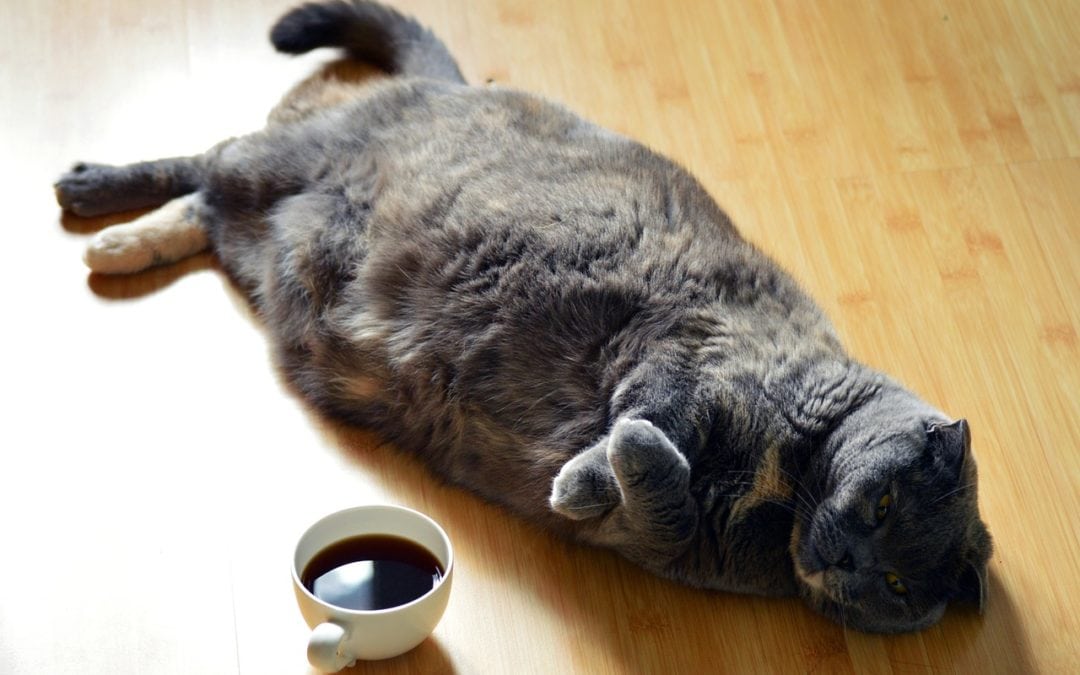Overweight Cats…a Growing Problem

The holidays have passed for another year and winter is in full swing. Even our pets tend to gain weight during the wintery holiday bliss. If you have noticed your cat has gained a few pounds or just feels “fluffier” than usual, then read on, Dr. Kerri Mcmahon, veterinarian at CFVC, has some tips to share.
The biggest population of overweight cats lives strictly or primarily indoors. This lifestyle generally leads to a longer life and fewer illnesses, but can also lead to obesity. So, what happens to an overweight cat? Does it really matter if a cat is too heavy, after all they are not athletes?! Well, the diseases we see very often in these guys are diabetes mellitus, increased incidence of urinary tract complications, skin disease from an inability to groom properly, and arthritis of the hips and elbows. This isn’t an all-inclusive list but these are certainly the types of disease we have seen routinely and some of them are permanent changes to the health of your cat.
What do I do, doc? The first step is a diet change. Since cats are carnivores, they need a very high protein diet – a protein percentage of 35% to 50% is ideal. This percentage can be found on your cat’s bag of food listed in the nutritional profile, usually the first line. High protein diets are appropriate for kittens, adults, and senior cats — unless there is the presence of liver or kidney disease. This type of diet has been seen to help a number of ailments in the cat and also helps them lose weight! Whoo-hoo! An average cat needs around a half cup of food PER DAY. That is a half of a measuring cup. A tip to keeping your feline friend from begging all day for food is to invest in a feeder for diabetic cats. These typically have a rotating disk on top that allows access to one bit of food at a time. The daily feeding amount can be divided between the bowls and over the course of a day the different bowls will open and be available to eat. Very nifty and less begging!
The second step to weight loss … increased exercise, just like us. Try to figure out what trips your kitty’s trigger! What really gets them going? Just 5-10 minutes of activity twice a day may be more than they are doing now. Most cats like to chase and bat things. Laser lights or a flashlight that you can tease your cat with is often fun. Crinkle sacks are a hit with every cat! And use catnip. This will get most cats excited about playing and moving around. Another quick tip – play with your cat before feeding them or right when you get home from being gone. A hungry cat will play more because their prey-drive is stimulated by hunger. And of course, they are always glad to see you when you get home!
Third step … weigh your cat monthly and keep a record of the results. Weigh you and your cat together first, then weigh yourself, then subtract to get your cat’s weight. If you go 2 months with no change in weight, then your plan needs to be adjusted. Good luck and have fun!
Dr. Kerri McMahon and the staff at CFVC are passionate about helping clients provide the best care for their pets. We offer a variety of products to help your cats maintain a healthy lifestyle. If you have any questions, please don’t hesitate to contact us at 972-636-9562.


